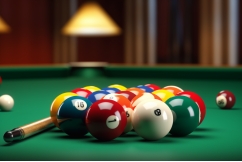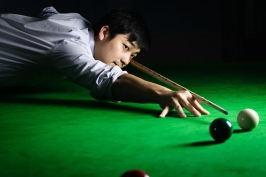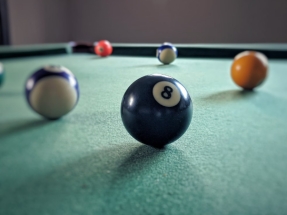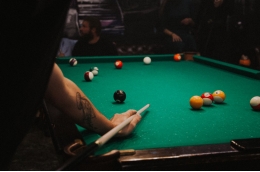In a billiards game, falling behind in the score doesn’t mean failure. Mastering effective score-chasing methods can enable you to turn the tables in an unfavorable situation.

I. Stabilize Your Mentality and Regain Confidence
The psychological state plays a decisive role in chasing scores in billiards. When there is a large score gap, negative emotions such as nervousness and anxiety are likely to arise, interfering with the performance of your skills. At this time, it is essential to stay calm and avoid being disrupted by the opponent’s leading advantage. You can try to relax your body by taking deep breaths. Before each shot, spend a few seconds adjusting your breathing to calm your emotions. At the same time, carry out positive self-suggestion. Recall your past successful shot experiences and tell yourself that you have the ability to catch up with the score. For example, when Ding Junhui faced a significant 3-1 lead by his opponent, during the intermission, he maintained his touch by practicing shots and received support and encouragement from the audience, ultimately managing to catch up with the score. Remember, only when your mentality is stable can your skills be performed normally or even beyond the normal level.

II. Strengthen the Basics and Make Precise Shots
Basic skills are the foundation for chasing scores. Ensure the accuracy of aiming for each shot. Carefully observe the positional relationship between the cue ball and the object ball, and determine the best aiming point. In terms of applying force, pay attention to the control of power. Adjust the strength of the shot according to the distance between the balls and the desired position of the cue ball. Practice different types of strokes, such as the follow shot, the draw shot, and the English shot, and master their applications in different ball configurations. For example, if you want the cue ball to follow a significant distance after hitting the object ball, you can use a follow shot; if you want the cue ball to pull back, choose a draw shot. Solid basic skills can increase the success rate of scoring goals and gradually narrow the score gap.

III. Flexible Tactics to Create Opportunities
(1) Ingenious Defense
When the opportunity for an attack is not good, defense becomes an important strategy. By precisely controlling the landing point of the cue ball, place it in a safe area while causing trouble for the opponent. For example, in a snooker game, create a snooker situation to force the opponent to make a mistake in solving the snooker and incur penalty points. In Chinese billiards, you can also place the cue ball near the cushion and protected by other balls around it, making it difficult for the opponent to attack. Defense is not about passively waiting but creating favorable conditions for the next attack. Such defense highly tests the quality of the billiard cushion and the flatness of the table surface. A good billiard table, combined with the stroke method, can greatly prevent the opponent from continuing the attack and block their scoring opportunities. Spike Billiard Table, a source manufacturer, has been focusing on the production and design of mid-to-high-end billiard tables for 23 years and has received unanimous praise from customers.
(2) Attack Selection
When facing a complex ball configuration, analyze the relationship between the balls and determine the key ball, that is, the ball that can open up the situation and create subsequent shot opportunities after being pocketed. Calculate the shooting angle and force, and consider the movement trajectory of the object ball and the position of the cue ball after the cue ball hits the key ball to ensure that while pocketing the key ball, the cue ball can be in a position convenient for the next shot. When you are confident, make a decisive attack and strive for consecutive scores. However, if you are not completely sure, do not attack blindly to avoid making mistakes and giving points to the opponent.
(3) Utilize the Rules
Be familiar with the billiards rules and be good at using them to gain an advantage. For example, in snooker, understand the penalties for various fouls and the rules of the free ball. At the appropriate time, force the opponent to commit a foul to win penalty points or a favorable shooting situation for yourself.

IV. Observe the Opponent and Look for Weaknesses
During the game, carefully observe the opponent’s shooting habits, the way of applying force, the preferences for positioning the cue ball, and their performance under pressure. If you find that the opponent is prone to making mistakes when dealing with a certain type of ball configuration or has a psychological fluctuation after scoring consecutive points, you can formulate targeted strategies. For example, deliberately guide the ball configuration to a situation that the opponent is not good at handling, forcing the opponent to make mistakes and creating score-chasing opportunities for yourself.
Falling behind in the score in a billiards game is not terrifying. As long as you adjust your mentality, strengthen your basic skills, flexibly apply tactics, and at the same time observe the opponent’s weaknesses, you will have the opportunity to catch up and reverse the situation, demonstrating your
strong strength and tenacity on the billiard table.
@spk.billiard
